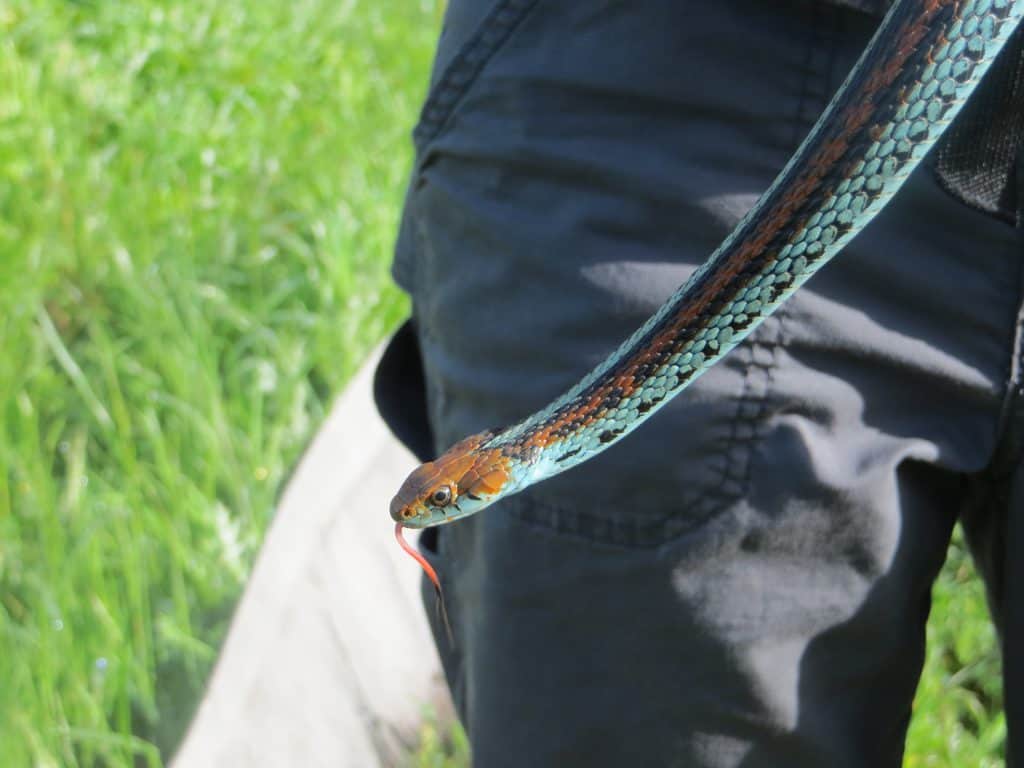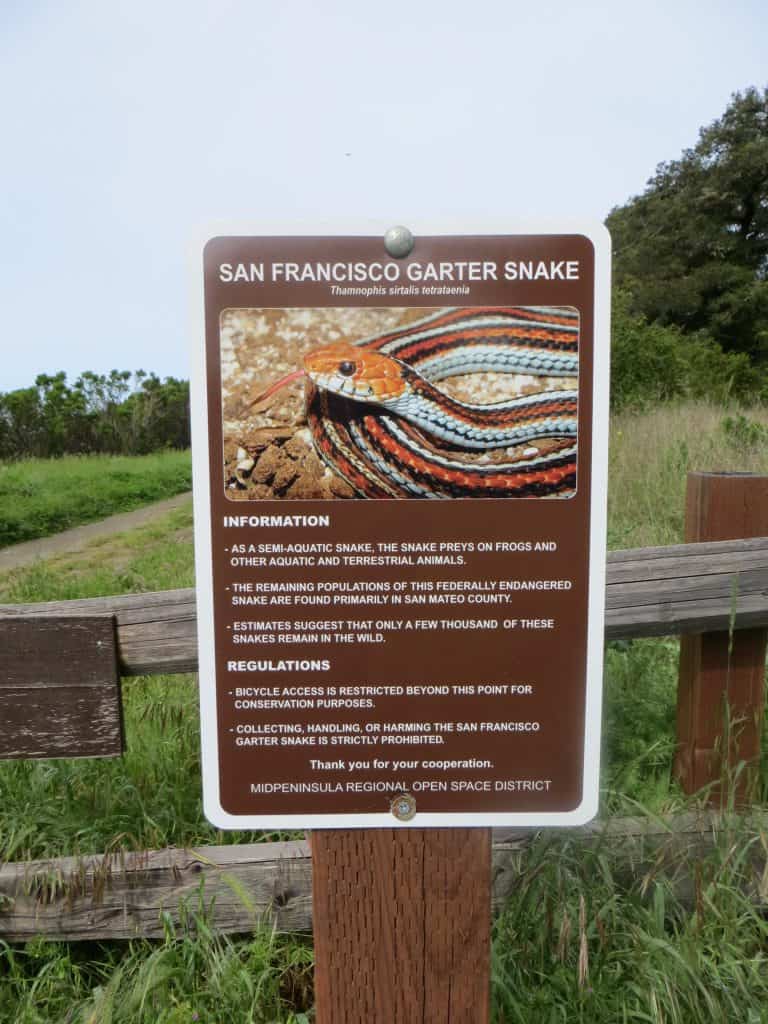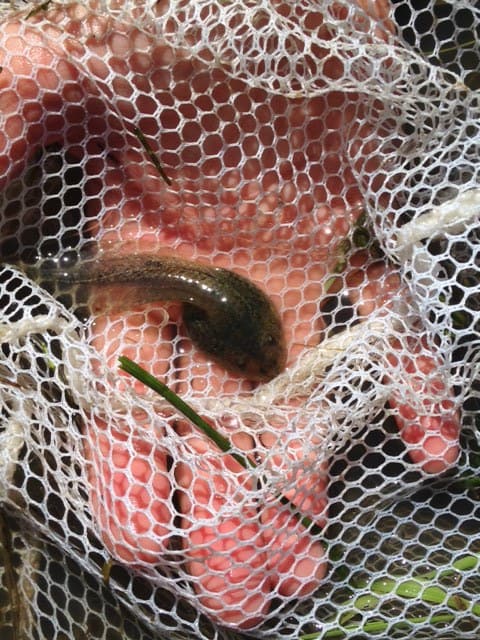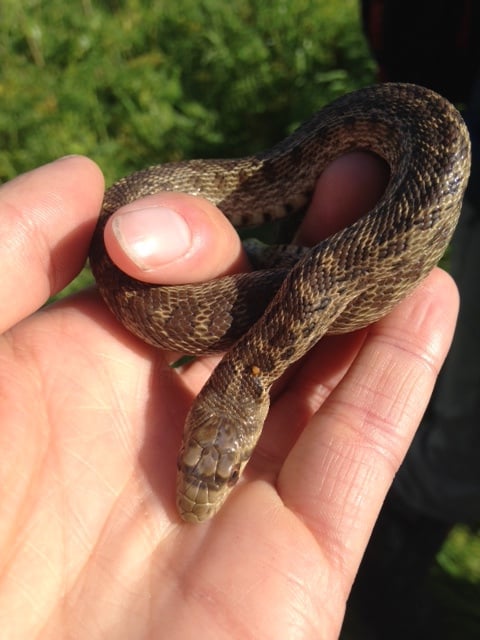Share this article
Site visit insights: Managing for frogs and snakes
Site visits are critical to helping scientists learn more about species and their habitats. The trips often take them into areas most people do not have a chance to explore, including public and privately-owned restricted sites, as well as some remote and hard-to-reach areas. “Site visit Insights” provides a behind-the-scenes perspective of wildlife biology, featuring photographs and interesting discoveries and happenings biologists experience in the field.
In cooperation with the U.S. Fish and Wildlife Service, The Wildlife Society is pleased to share these insights.
Wildlife Biologist: Sarah Markegard, wildlife biologist, Sacramento Fish and Wildlife Office
Site visit location: Midpeninsula Regional Open Space District, San Mateo County, California
What was the purpose of the site visit?
I set up a site visit with Midpeninsula Regional Open Space District (Midpen) to discuss their ongoing natural resource management activities and future plans for California red-legged frog and San Francisco garter snake recovery and habitat enhancement throughout the district’s preserves. I also wanted to participate in San Francisco garter snake surveys with experts and see the habitat for both species first-hand; so that when I communicate with Midpen in the future, I will have a more complete picture of the management issues and population needs specific to these preserves.
Where did you go?
Midpeninsula Regional Open Space District in San Mateo County. The site visit included San Francisco garter snake surveys at Russian Ridge Open Space Preserve, a California red-legged frog habitat overview at La Honda Open Space Preserve, and a brief visit to Purisima Creek Redwoods Open Space Preserve to check out marbled murrelet habitat.
What partners were you working with and what is the nature of SFWO’s partnership with them?
I worked with Midpen, as well as the U.S. Geological Survey’s Western Ecological Research Center. For the past few years the SFWO has worked closely with Midpen to develop a recovery permit and biological opinion for their restoration and survey activities (for San Francisco garter snake and California red-legged frog) throughout the district. We will continue to work together to ensure that we are managing federally listed species and their habitats on Midpen lands using the best available science. One of the ways we are doing that is through our collaboration with the Western Ecological Research Center. They have been conducting San Francisco garter snake research on the district for the last few years and are now training Midpen staff to conduct these surveys on their own.
What did you learn from this site visit that you didn’t know before?
As a result of this site visit, I learned first-hand how to conduct cover board and drift fence surveys for San Francisco garter snake, as well as how to handle, measure, sex and mark snakes in the field to obtain important information without causing undue harm to the captured individuals. I also have a much clearer understanding of the planning that goes into California red-legged frog pond restoration and creation and the challenges of managing these habitats for multiple uses (e.g., preservation of natural and cultural resources, recreation, livestock grazing, etc.).
What surprises did you encounter during the site visit?
I was most surprised by Midpen staff’s extensive knowledge of each and every preserve that they manage. It is quite a feat knowing that these preserves encompass over 63,000 acres of land scattered throughout three counties, and Midpen’s Natural Resource staff is made up of only about eight people. It’s even more impressive that they are able to keep such close tabs on the natural condition of the preserves and protect them to the extent that they do, considering the varied habitats they manage and the numerous stakeholders involved.

The San Francisco garter snake is endangered and is in danger of extinction throughout all or a significant portion of its range. ©Julie Andersen, Midpeninsula Regional Open Space District

Microbranding San Francisco garter snakes helps with monitoring, but does not harm the snake or inhibit its mobility. ©Sarah Markegard, USFWS

It is important to be familiar with the requirements and regulations posted at parks and refuges to ensure plant and animal wildlife are not harmed during your visit. ©Julie Andersen, Midpeninsula Regional Open Space District
Header Image: SFWO Wildlife Biologist Sarah Markegard holding a San Francisco garter snake during recent site visit to Midpeninsula Regional Open Space District. ©Julie Andersen, Midpeninsula Regional Open Space Distric










